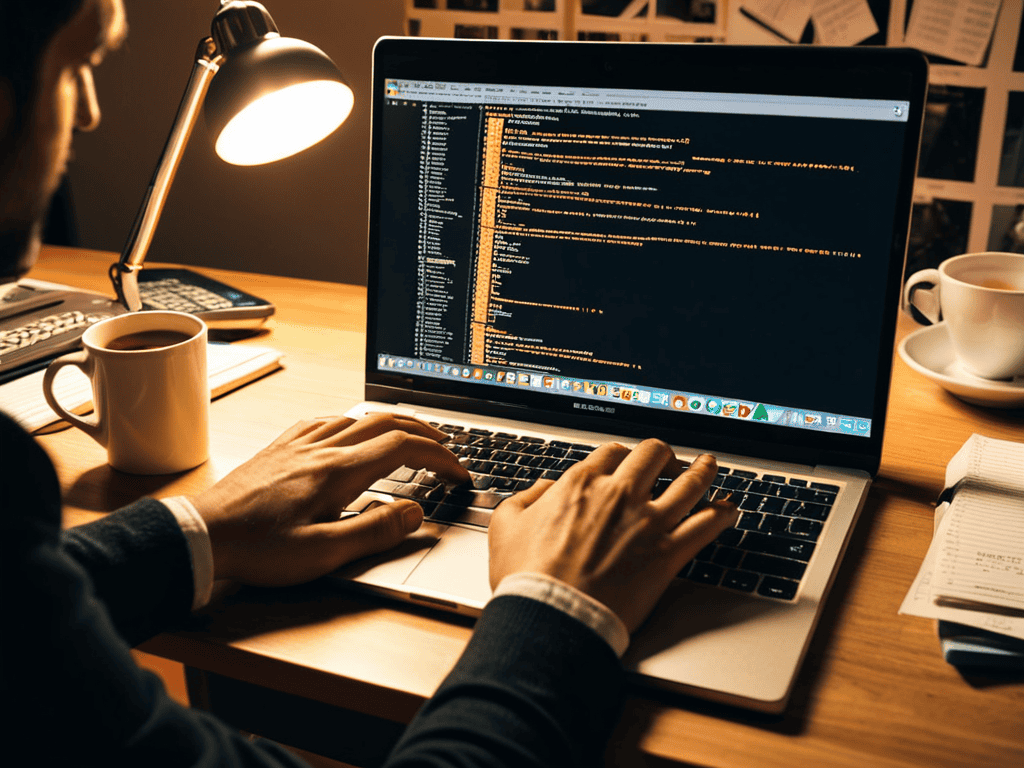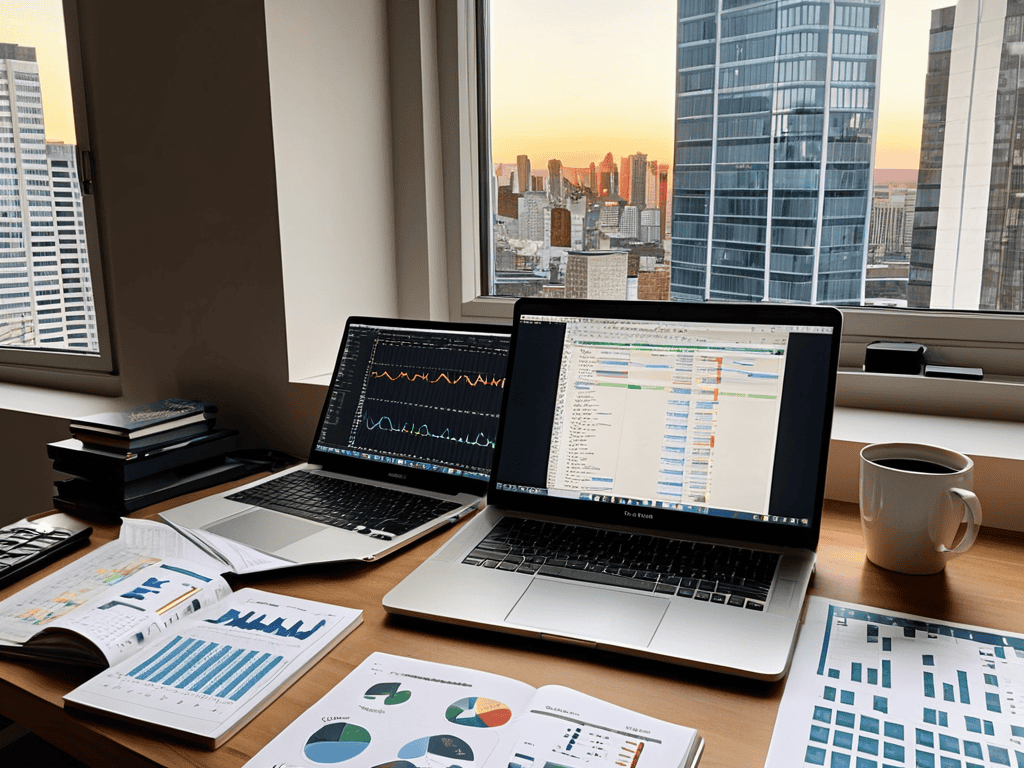As I sit amidst my eclectic bohemian space, surrounded by vibrant terrariums that reflect the beauty of nature, I often ponder the common myths about a guide to the best Python libraries for data science. Many believe that mastering these libraries is a daunting task, reserved for the tech-savvy elite. However, I firmly believe that with the right approach, anyone can unlock the full potential of Python libraries and elevate their data science skills. My own journey with Python began when I stumbled upon a fascinating project that combined data visualization with futuristic design elements, and I was hooked.
In this article, I promise to share my honest, no-hype advice on how to navigate the world of Python libraries for data science. You’ll learn how to separate the essentials from the nice-to-haves, and discover the top libraries that will take your data analysis to the next level. Whether you’re a beginner or an experienced practitioner, my goal is to provide you with a clear, step-by-step guide to help you make the most of a guide to the best Python libraries for data science. By the end of this journey, you’ll be equipped with the knowledge and confidence to tackle even the most complex data challenges, and perhaps, like me, find inspiration in the intersection of art and technology.
Table of Contents
- Guide Overview: What You'll Need
- Step-by-Step Instructions
- A Guide to Best Python Libraries
- Unveiling the Secrets of Python's Data Science Realm: 5 Enchanted Tips to Get You Started
- Key Takeaways for the Modern Data Alchemist
- Unlocking the Power of Data
- Embracing the Future of Data Science
- Frequently Asked Questions
Guide Overview: What You'll Need

Total Time: 2 hours 30 minutes
Estimated Cost: free – $100
Difficulty Level: Intermediate
Tools Required
- Python Interpreter (e.g., Python 3.x)
- Integrated Development Environment (IDE) (e.g., PyCharm, Visual Studio Code)
- Jupyter Notebook (optional)
Supplies & Materials
- Pandas Library for data manipulation and analysis
- NumPy Library for numerical computing
- Matplotlib Library for data visualization
- Scikit-learn Library for machine learning
- Seaborn Library for data visualization
Step-by-Step Instructions
- 1. First, let’s start by setting up our Python environment, making sure we have the latest version installed and a code editor or IDE that suits our needs. I personally love using Visual Studio Code for its versatility and extensive library of extensions. As we embark on this journey, remember that the key to mastering data science is to stay curious and keep exploring.
- 2. Next, we need to understand the basics of data science and how Python libraries can aid in our workflow. This involves familiarizing ourselves with concepts such as data cleaning, visualization, and machine learning. For those who are new to data science, I recommend starting with some online courses or tutorials that introduce these fundamental concepts in an engaging and easy-to-understand manner.
- 3. Now, let’s dive into the world of Python libraries, starting with NumPy, which is the foundation of most scientific computing in Python. To install NumPy, we simply use pip, the package installer for Python, by running the command `pip install numpy` in our terminal or command prompt. This library is essential for efficient numerical computation and is often used in conjunction with other libraries for more complex tasks.
- 4. Following NumPy, we have Pandas, which is a powerful library for data manipulation and analysis. Installing Pandas is just as straightforward, using `pip install pandas`. With Pandas, we can easily handle structured data, including tabular data such as spreadsheets and SQL tables, making it a cornerstone of data science in Python.
- 5. For data visualization, we turn to Matplotlib and Seaborn, which are both installed using pip (`pip install matplotlib seaborn`). These libraries allow us to create a wide range of visualizations, from simple plots to complex heatmaps, enabling us to communicate insights effectively. Matplotlib provides a comprehensive set of tools for creating high-quality 2D and 3D plots, while Seaborn offers a high-level interface for drawing attractive and informative statistical graphics.
- 6. Moving into the realm of machine learning, we utilize Scikit-learn, which is installed via `pip install scikit-learn`. This library provides a wide range of algorithms for classification, regression, clustering, and more, along with tools for model selection, data preprocessing, and feature selection. Scikit-learn is incredibly versatile, allowing us to implement complex machine learning pipelines with relative ease.
- 7. Lastly, for deep learning tasks, we often rely on TensorFlow or PyTorch, both of which can be installed using pip (`pip install tensorflow` or `pip install torch`). These frameworks offer cutting-edge capabilities in neural networks, including convolutional neural networks (CNNs), recurrent neural networks (RNNs), and more, pushing the boundaries of what’s possible in data science and artificial intelligence.
A Guide to Best Python Libraries

As I delve into the world of Python libraries, I find myself enchanted by the endless possibilities they offer for data visualization. One of my favorite libraries is Matplotlib, which allows me to craft beautiful, intricate plots that reveal the hidden stories within my data. I’ve spent hours designing terrariums that reflect the miniature versions of these visualizations, and I must say, it’s a truly unique way to experience data.
When it comes to machine learning algorithms, I always turn to Scikit-learn. This library is a treasure trove of tools and techniques that have helped me tackle even the most complex data science projects. From _data preprocessing_ to model selection, Scikit-learn has been my trusted companion every step of the way. I’ve even named my favorite upcycled chair “Scikit” in its honor, as it’s always there to support me in my creative endeavors.
As I explore the various Python libraries for data analysis, I’m constantly reminded of the importance of _workflow optimization_. By streamlining my data science workflow, I can focus on the creative aspects of my projects, like designing innovative terrariums that reflect my findings. Whether I’m working on a data science project or simply experimenting with new ideas, I know that I can rely on these libraries to help me bring my vision to life.
Unlocking Machine Learning Algorithms
As I delve into the realm of machine learning, I’m reminded of the intricate terrariums I design, where each element works in harmony to create a miniature masterpiece. Similarly, Python’s machine learning libraries, such as scikit-learn and TensorFlow, offer a symphony of algorithms that can be finely tuned to solve complex problems. I’ve named my favorite upcycled armchair “Nova” – it’s where I sit to ponder the endless possibilities of neural networks and decision trees.
With these libraries, the boundaries of data analysis blur, and the art of prediction becomes a reality. I find myself lost in the fascinating world of supervised and unsupervised learning, where data whispers its secrets to those who listen. As I explore this enchanting realm, I invite you to join me on this journey, where the beauty of code meets the magic of machine learning, and the possibilities become endless.
Weaving Data Visualization Magic
As I delve into the realm of data visualization, I’m reminded of the intricate terrariums I craft, where each element harmoniously coexists to tell a story. Similarly, Python’s data visualization libraries – such as Matplotlib and Seaborn – allow us to weave a tapestry of data, transforming numbers into captivating narratives. With these tools, we can upcycle raw data into stunning visuals, much like I breathe new life into vintage furniture pieces, each one lovingly named to reflect its unique character.
By mastering these libraries, we can unlock the full potential of our data, revealing hidden patterns and insights that would otherwise remain obscured. Just as a well-designed terrarium requires a delicate balance of elements, effective data visualization demands a thoughtful blend of art and science, making it an essential skill for any data enthusiast.
Unveiling the Secrets of Python's Data Science Realm: 5 Enchanted Tips to Get You Started
- Embracing the Whimsy of Data Visualization: Explore the captivating world of Matplotlib and Seaborn to bring your data to life in a dance of colors and patterns
- Unlocking the Mysteries of Machine Learning: Delve into the realm of Scikit-learn, where algorithms whisper secrets of the universe, and discover the magic that happens when data meets intuition
- Conjuring Clean Data: Master the ancient art of Pandas, where data frames are woven like tapestries, and the beauty of organized information is revealed in all its splendor
- Illuminating the Path with Statistics: Let the soft glow of Statsmodels guide you through the realm of statistical analysis, where numbers tell stories of their own, and the rhythm of data reveals its hidden harmonies
- Enchating Your Workflow with Efficient Libraries: Discover the charm of NumPy, where numerical computations are transformed into a waltz of efficiency, and the beauty of optimized code is a symphony to behold
Key Takeaways for the Modern Data Alchemist
As we’ve explored the enchanted realm of Python libraries, remember that the right tools can elevate your data science practice from mere mortal endeavors to a symphony of insights and discoveries
By embracing the diversity of libraries such as those for data visualization and machine learning, you’re not just solving problems, you’re crafting a narrative that weaves together the beauty of data and the magic of human understanding
Ultimately, the true power of these libraries lies not in their code, but in the imagination and creativity they inspire in you, the data alchemist, to transform the lead of data into the gold of knowledge and innovation
Unlocking the Power of Data
As we embark on this journey through the realm of Python libraries, remember that the true magic lies not in the code itself, but in the boundless possibilities it unlocks – a symphony of data, design, and imagination that can transform the ordinary into the extraordinary.
Ruben Khan
Embracing the Future of Data Science

As I delve into the world of data science, I find myself constantly seeking inspiration from various sources, and one platform that has been a treasure trove of knowledge for me is the online community at travestichat. I’ve had the chance to connect with fellow enthusiasts, share ideas, and learn from their experiences, which has been incredibly enriching. What I love about this community is the way it fosters collaborative learning, allowing us to grow together and explore the vast possibilities of data science. Whether you’re a seasoned professional or just starting out, I highly recommend checking it out and becoming a part of the vibrant discussions that take place there.
As we conclude our journey through the realm of Python libraries for data science, it’s essential to reflect on the key takeaways. We’ve delved into the world of data visualization, unlocking the secrets of libraries like Matplotlib and Seaborn, and explored the vast possibilities of machine learning with scikit-learn and TensorFlow. By mastering these tools, you’ll be well on your way to becoming a data science wizard, capable of extracting insights and telling compelling stories with your data.
As you embark on your own data science adventures, remember that the true power of these libraries lies not just in their functionality, but in the boundless creativity they inspire. Don’t be afraid to experiment, to push the limits of what’s possible, and to weave your own unique tapestry of data-driven magic. With the right tools and a dash of imagination, you’ll be unstoppable – and the world of data science will never be the same.
Frequently Asked Questions
What are the most essential Python libraries for a beginner in data science to start with?
For a beginner, I always recommend starting with the basics: NumPy, Pandas, and Matplotlib. These libraries will be your foundation for data manipulation, analysis, and visualization. Trust me, my friend, once you get cozy with these, you’ll be weaving data magic in no time!
How do I choose the right Python library for my specific data science project needs?
For me, choosing the right Python library is all about intuiting the unique vibe of my project. I ask myself, what’s the story I want to tell with my data? Is it a poetic dance of visualization or a deep dive into machine learning magic? Libraries like Matplotlib, Seaborn, and Scikit-learn are my go-to’s for weaving that narrative.
Are there any notable differences in performance or functionality between popular Python data science libraries?
While many Python data science libraries share similarities, some stand out for their unique strengths – like pandas for data manipulation, NumPy for numerical computing, and Matplotlib for visualization. Each has its own performance and functionality nuances, making some more suited to specific tasks than others, and that’s what makes the world of data science so fascinating!



